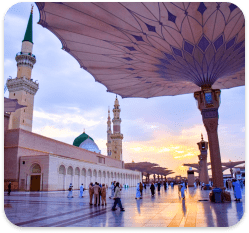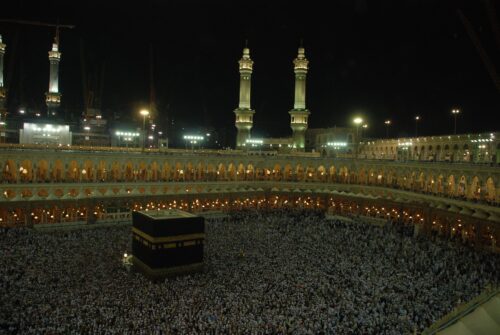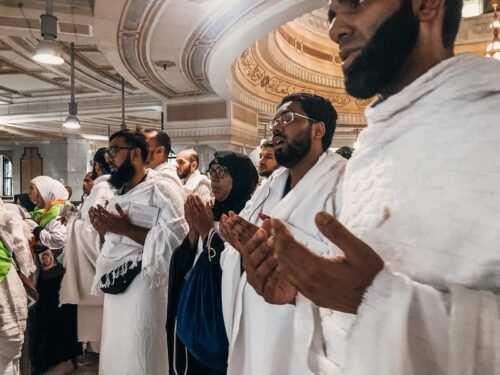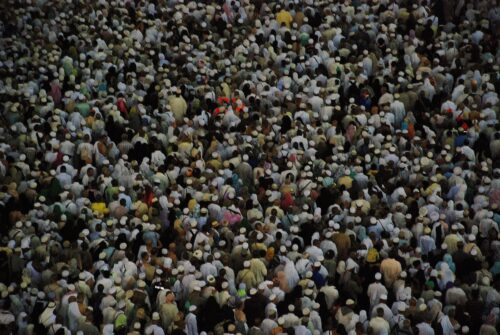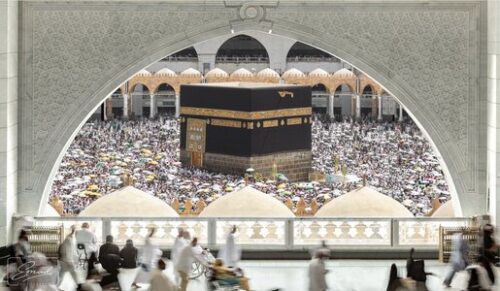Quba Castle – Fort Banu Qaynuqah
Every monument in this world has a story behind it. Underneath the foundation lies the tale of a person with hope in their heart and the intention to change the world for the better. So, if you have recently planned to go to Madinah, Saudi Arabia and are looking for a tourist spot to inspire you, do visit the great Fort of Quba, otherwise known as Quba Castle.
Built on the orders of the renowned leader Fakhri Pasha, Quba Castle makes its mark in the military history of Islam as the fort that protected the people of Madinah from the Hashemite army.
Quba Castle played a critical role in dethroning the Turk leaders and giving power back to the Arab rulers. In simpler words, the Castle of Quba helped re-establish Islamic rule in the Arabian Peninsula. Here is everything you need to know about Quba Castle.
What Is the Castle Quba?
 Quba Castle is one of the most prominent ancient architectural landmarks in Quba territory in the city of Madinah, Saudi Arabia. The historical castle is visited by thousands of Muslim tourists every year. Quba Castle is an old Ottoman fortress that was constructed on the orders of the military commander Fakhri Pasha to provide fortification against the invading forces of the Hashemite army. Comprising three floors and several windows, Quba Castle covers an area of 218 square metres.
Quba Castle is one of the most prominent ancient architectural landmarks in Quba territory in the city of Madinah, Saudi Arabia. The historical castle is visited by thousands of Muslim tourists every year. Quba Castle is an old Ottoman fortress that was constructed on the orders of the military commander Fakhri Pasha to provide fortification against the invading forces of the Hashemite army. Comprising three floors and several windows, Quba Castle covers an area of 218 square metres.
Where Is the Castle Located?
The historic Quba Castle is built in the north of Quba Mosque, at a distance of almost 1500 metres on a hill in Harrat Bani Bayada (known today as the Al-Dawima neighbourhood) in Madinah, Saudi Arabia.
Who Built Quba Castle?
The Quba Castle was constructed in 1915 AD by the governor of Madinah (1916 to 1919 AD) and the commander of the Ottoman Army, Fakhri Pasha. The purpose behind the development of this magnificent castle was to provide protection from invading forces.
History of Castle Quba
According to historical narrations, the military leader of the Ottoman Empire, Fakhri Pasha, felt the need to control the Quba region in case the Hashemite army planned an attack on the city of Madinah from that region. Moreover, Fakhri Pasha was also interested in opening a military supply channel from the city to Quba. He planned to make it from the wall of the Quba Gate all the way to Quba Mosque.
To bring his plan to reality, Fakhri Pasha gave his military troops the order to reform the winding road into a straight one. While the surveyors worked on constructing the path of the road, the army workers connected this road through the orchards, and the military convoys worked on establishing more fortifications in the city.
In order to make the city safer than ever, Fakhri Pasha instructed his military troops to establish a control area and construct a defensive castle at the same time. Finally, in 1914 AD/1333 AH, after a lot of hard work, the Quba road was preceded by Al-Aynia Street’s opening to deliver military convoys to the headquarters of Fakhri Pasha, Bab Al-Salam.
Significance of Castle Quba
Also known as the Ottoman Castle, the Quba Fort was constructed by Fakhri Pasha almost 200 years ago on a high plateau near the Quba Mosque. The primary reason behind the creation of Quba Castle was to protect the Ottoman Empire from being invaded by the Hashemite army. The establishment of the Quba Fort also played a critical role in deposing Turkish rule and giving the power back to Arab rulers.
Moreover, according to some narrations, it is believed that Quba Castle was built on the spot where the people of Madinah welcomed Prophet Muhammad (PBUH) and his beloved companion, Abu Bakr (RA), after the migration from Makkah. The historical monument holds great archaeological, Islamic, and cultural significance and has been restored for tourism.
Architecture
The Quba Castle comprises three floors and covers an area of about 218 square metres. The magnificent Fort is constructed using the black stones of Madinah. The walls of the entire Quba Castle are painted with white plaster.
In order to protect Quba Castle from all sides, Fakhri Pasha made sure to build only a single door that allows you to enter and exit the fort. Constructed strategically, all three floors of the castle have openings that allow you to monitor all four sides, ensuring protection while making it easy to target your opponent.
Islamic Landmarks Near Castle Quba
 There are several significant Islamic monuments located near Quba Castle. Some of them are mentioned below:
There are several significant Islamic monuments located near Quba Castle. Some of them are mentioned below:
- Masjid Quba: Located just 4 kilometres away, one of these must-visit Islamic landmarks is the first mosque in Islam, Masjid Quba. It is where Prophet Muhammad (PBUH) and Abu Bakr (RA) resided in Madinah after migrating from Makkah. Allah SWT in the Holy Quran says, “…certainly a masjid founded on piety from the very first day is more deserving that you should stand in it…” [Holy Quran, 9:108]. The Messenger (PBUH) of Allah SWT said, “He who purifies himself at his home and comes to Masjid Quba and offers two rakats therein, will be rewarded the reward of an Umrah (lesser pilgrimage).” [Sunan ibn Majah]
- Garden of Salman Farsi (RA): Approximately 4.8 kilometres away from Quba Castle stands the beautiful Garden of Salman Farsi (RA). It is said to be the land on which Prophet Muhammad (PBUH) planted around three hundred date trees in exchange for the freedom of Salman Farsi (RA).
Summary – Quba castle
Constructed from 1915 to 1918 on the order of Fakhri Pasha, Quba Castle is a major part of the history of Madinah. It was built not only to fortify the borders of Madinah but to protect the city from the attack (invasion) of the Hashemite army. Also known as Fort Quba, the Castle is located in the southern region of Madinah, Saudi Arabia and is at a distance of roughly 4 kilometres from Masjid Quba. Quba Castle covers an area of 218 square metres, consisting of three levels and around 7 to 11 windows.
Explore this site and hundreds more from the three holy sites on IslamicLandmarks.com
